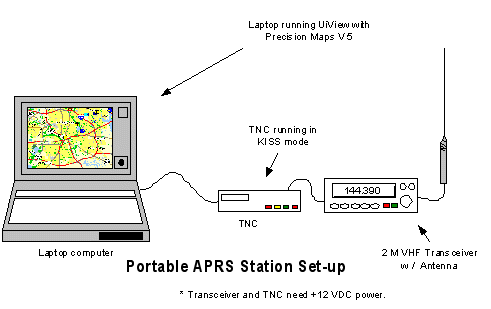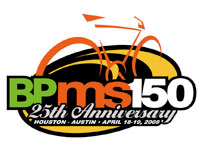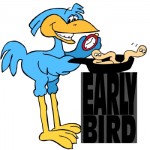APRS setup information from http://www.billdiaz.dynip.com/aprs_info.htm
A number of APRS users frequently incorrectly configure their APRS trackers, fixed stations, digipeaters and client applications. Some well meaning users are compounding the problem by providing “expert” advice to newbies. This “expert” advice has caused trackers to become inoperative, and has clogged 144.39MHZ due to excessive and totally inappropriate paths. Poor APRS operating practices not only affect our local area, but adversely impact users hundreds of miles away. Poor operating practices can cause the network to fail when we need it most, during emergencies such as SkyWarn etc.


 The FCC Proposes to Allocate 20 MHz of Spectrum in 413-456 MHz Band For Implanted Neuromuscular Devices.
The FCC Proposes to Allocate 20 MHz of Spectrum in 413-456 MHz Band For Implanted Neuromuscular Devices. Due to severe t-storms which dropped as much as 10 inches of rain or more across the route being used for the 2009 BPMS150 event, and the prediction of 60% chance of more severe t-storms dropping another 6-10 inches of rain on Saturday, the executive committee met on Friday night and pulled the plug on the first day of the 2 day event. Riders will be transported Saturday afternoon to La Grange, TX (or will find their own way there in private vehicles) where they will spend the night, and take off as normal Sunday morning for the ride to Austin, TX where the finish line awaits.
Due to severe t-storms which dropped as much as 10 inches of rain or more across the route being used for the 2009 BPMS150 event, and the prediction of 60% chance of more severe t-storms dropping another 6-10 inches of rain on Saturday, the executive committee met on Friday night and pulled the plug on the first day of the 2 day event. Riders will be transported Saturday afternoon to La Grange, TX (or will find their own way there in private vehicles) where they will spend the night, and take off as normal Sunday morning for the ride to Austin, TX where the finish line awaits. May 30th – 31st
May 30th – 31st What the VE forgot to tell you, and the FCC didn’t print on your ham license…
What the VE forgot to tell you, and the FCC didn’t print on your ham license… The Army, Air Force, Navy, Marine Corps and Coast Guard are co-sponsoring the annual Military/Amateur Radio Crossband Communications Test in celebration of the 59th anniversary of Armed Forces Day.
The Army, Air Force, Navy, Marine Corps and Coast Guard are co-sponsoring the annual Military/Amateur Radio Crossband Communications Test in celebration of the 59th anniversary of Armed Forces Day. I was doing some call sign lookups of our newer hams today (04/05/2009), and found these 4 pages on the web, with a list of 3,004 licensed hams in San Antonio, TX. (Note – turns out some of the hams on the list have expired licenses, so the actual number of “active” hams is a few hundred less than 3k. – Lee)
I was doing some call sign lookups of our newer hams today (04/05/2009), and found these 4 pages on the web, with a list of 3,004 licensed hams in San Antonio, TX. (Note – turns out some of the hams on the list have expired licenses, so the actual number of “active” hams is a few hundred less than 3k. – Lee)